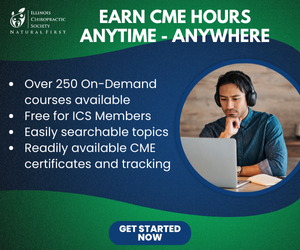
Interview with Dr. Todd Renn (Fuel Series)
As a part of our Practice Fuel Series, Dr. Todd Renn discusses methods that he has used in his practice to increase the value of his business. Watch the video to learn more!
Book Mentioned
“The E-Myth Revisited: Why Most Small Businesses Don’t Work and What to Do About It” – Michael Gerber
Transcript:
Marc Abla:
With ongoing conversations that we’re having with doctors across the country regarding their practice, how they generate value for the practice, not just for today, but really into the future today. Joining us is Dr. Todd Wren out of the Chicagoland area here in Illinois. And Dr. thanks for joining us today. We really appreciate it.
Dr. Renn:
Thank you for having me.
Marc Abla:
So here’s the question, you and I’ve talked a bit about this, even before today’s call, but we’ve talked about the practice value and what doctors can do to ensure that their practice has value again, not just for today, but well into the future, preparing for its eventual sale, because at some point, the practice will be sold. And at one point I’m assuming you do want to retire. So what are some things that you have done, doc, that you believe really, truly bring value, both now and into the future to your practice?
Dr. Renn:
It started with a friend who gave me the E Myth book, revisited way back when I first started practicing, and it really talked about you know, being able to work in your practice, and really came to light is that you need systems, you have to have a system for everything. And the difficulty is in managing people, you can manage a system and get the people to manage systems. Essentially, you have to write and define everything from the patient walks into your office the very first time, so, they leave and how does everything look? How is it defined, and giving those definitions and then creating standard operating procedures for your staff to follow? So that if someone does leave, there’s, you know, a notebook or per se or on the computer, so that you can they can actually reference those standard operating procedures. And it’s like I remember a quote from that book is, you know, the guy said, I sold my practice, and he said why did you sell your practice so young, he says because I had something to sell, you know, and his whole thing was it was based off of those standard operating procedures. So I’ve spent years just developing and refining those, and trying to come up with better ways to help staff to do it. And I’ll tell you, it’s saved me several times. When you’re with patients, and they have to do something well, how do you look up to do it? How is that done? In creating different systems? So I mean, that’s in a nutshell how I’ve approached it; and I thank my friend, Chris, for giving me that book way long time ago, because, you know, it was it was very helpful.
Marc Abla:
Yeah, I mean, it’s interesting, because when we start talking about processes and systems, and we don’t think about them sometimes in in the chiropractic world, we rewind to when McDonald’s was originally put into place, they had a product that people wanted, they were selling it they had, you know, a great store. It was when Ray Kroc joined them and said, Well, this, if we had systems then we can actually multiply this and, grow it even bigger than what it is. And that’s what Kroc brought to the McDonald’s industry really, and really to the restaurant industry as a whole. So, systems, they matter. These things matter. And that that but what was the name of the book, again, just for everybody who’s listened to that.
Dr. Renn:
One was the E Myth. And it was the revisited version. Since then, they have a chiropractic version that was written thereafter and authored by someone else who partnered with them. And I highly recommend reading that book you can read on a Sunday afternoon. And if you haven’t read it, you should.
Marc Abla:
We’ll throw that link to an Amazon copy of that, just for everybody’s reference.
Dr. Renn:
It’s about framework and about how to operate a business. And I think that’s something that we all missed in school.
Marc Abla:
Yeah, it is. You know, nobody likes to talk about healthcare as a business, because we’re in it for the patients. But at the end of the day, we have to have a good solid business. And I think I’ve mentioned to you before, one of the calls I hate getting is when doctors call and say, Hey Marc, what are the steps that I need to do to close my practice? I have a philosophy that every practice has value. And it’s it’s what you do, such as such as this doc and your processes and systems, that helped bring long-term and longevity value to that practice. So what are some other steps that you’ve taken to really improve the value of your practice?
Dr. Renn:
Really, it was the offering of services to make sure that you know, we’re able to serve a wide variety of the population for my practice, where I’m located, and developing, you know, physical therapy protocols that can easily be done at home, so that you can make sure not only what you do that the patient is also responsible for doing those things. as well. You know, so developing those physical therapy protocols, not just giving tear-off sheets. And, you know, incorporating other services that I don’t perform like massage or acupuncture so that we have, you know, a wide breadth of services that the patients can take a landing here at the clinic, you know, so it’s not just a one-line service thing, here, we have three different entry points, they can come in just for massage, they can come in for acupuncture, they can come in for chiropractic. From there, we would, you know, you do inter-referrals, and we, we co-manage and co-treat our patients together and talk about those cases and stuff. So I think that that provides value as well. Not only for the patients but for the clinic.
Marc Abla:
Some of the other things that we’ve talked about you and I are, you know, as a part of your systems or processes, you’ve added some automations, right, you’ve done some things in that regard for your practice, give us some examples of automations that you’ve put into place or, methodologies to really make things more efficient like that.
Dr. Renn:
So you see a technology and buy, and it looks good for your patients. And it looks good for your practice. And it looks good for your staff to kind of take away some of the duties that they do. You know, I grabbed those immediately, you know, it’s like, with our EHR software, they have released something where it can auto verify insurance now, well, instead of training my staff how to verify insurance for 10, different insurance companies and all the nuances of reading, interpreting what’s you know, online and available and stuff, it’s like the press a button, now they get it. So that in itself is hugely valuable, or looking for software that can track your patients, you know, not all software has that ability to kind of manage the patients that you want. We used to create, you know, spreadsheets and stuff years ago. And now you know, someone has come up with a way of doing it. So it’s just kind of pulling the data from your EHR software, giving you a way to manage that. And look at your patients, and whether they’re coming in following treatment plans, you know, reaching out to them online scheduling, all the things that just make fewer touch points for your patients. So anything that you know, you can have they call it friction points as one doctor told me his friction point is anything that a patient touches, you give him an outcome assessment for him, you give him us, for him to give him that formal, the less they have to touch, and the less your staff has to touch, the better it is for everybody. And so trying to consolidate that and get that into like a smooth system is really necessary, especially these days with the way the staffing has gone in the last year or so. It’s been a challenge for sure. So the less you have your staff do, and they can just manage things that I think the better it is. So technology has really come a long way in the last five years for sure.
Marc Abla:
Yeah, and you hit it, right, we’re in a tough labor market. And that doesn’t seem to be relaxing much. Especially as you know, unemployment continues to fall, it’s going to be harder and harder to hire. And so I appreciate that you’ve taken some aggressive steps right up front to utilize technology to handle some of the things that historically or traditionally are handled by staff. Any additional, you know, tidbits that you would say, man, I wish doctors knew this in regards to process practice efficiencies and systems and automations before we wrap up?
Dr. Renn:
Nothing comes to mind, really. You know, with staffing issues these days, I guess my my general recommendation is just, you know, you’re you’re likely to have some more staff turnover than you’re used to, the wages of the requesting are a lot higher. And so you’re gonna have to do more with less staff that really seems so we’re just making adjustments to, you know, get rid of the insurance contracts that are not good for the practice, focus on the ones that really do, to streamline it, and having the practitioners follow up more with their patients, regardless of where it was with the staff. So, I think that’s just a necessity so that you can, you know, someone leaves in a short-term basis that you’re able to kind of just keep rolling with it. And so we’ve made some decisions recently to help with that process, for sure.
Marc Abla:
Awesome. This helps and it’s awesome because, as we try to help our doctors in Illinois really fuel their practice and find ways to continue to bring value. We need experts, we need people who have had successes in a variety of areas, and so we can see we can help solve a lot of these issues. So, thank you, doctor, for your time today. Really appreciate it. everybody else we’ll catch you next week.

















